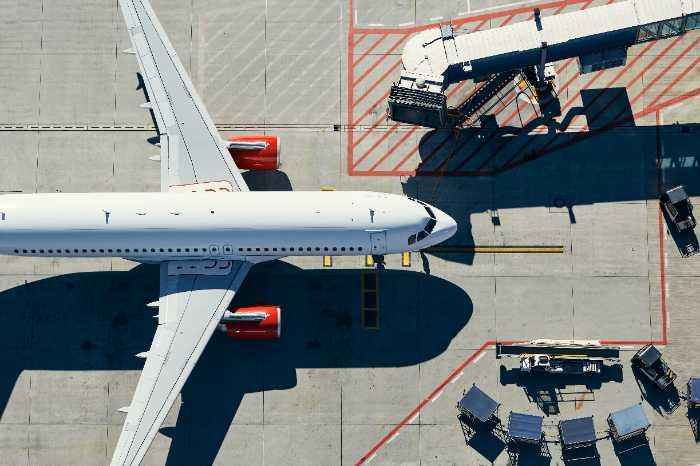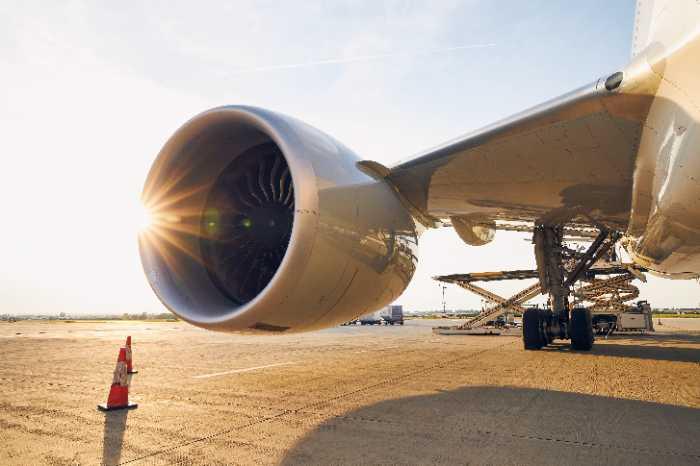
It’s hard to believe that just over a hundred years ago, air travel was nothing more than a wild dream. But on December 17th, 1903, the Wright brothers made history by successfully flying their aircraft for 59 seconds. For the first time ever, people could travel through the air at high speeds and cover great distances.
Since then, air travel has come a long way. We now have airplanes that can fly for thousands of miles without stopping and reach almost any destination in the world in just a few hours. Air travel has revolutionized the way we do business and connect with other people around the globe.
Air travel remains one of the most popular and efficient ways to get from Point A to Point B. If you want to learn more about air travel and how this life-changing invention has developed over time, keep reading.
The First Plane

Before private jets, helicopters, and the largest military cargo planes could soar the skies, it all had to start somewhere. The first powered airplane was built by the Wright brothers, Wilbur and Orville. Their Wright Flyer was a canvas-covered wood and metal plane. On December 17th, 1903, they made history by successfully flying their aircraft for 59 seconds.
The Wright brothers’ achievement was a major breakthrough for aviation. It showed that powered flight was possible and opened the door for further innovation.
Over the next few years, the Wright brothers continued to refine their designs. In 1905, they built the Wright Flyer III, which was significantly larger and more powerful than their previous models. This plane was capable of flying for extended periods and covering longer distances.
The Wright brothers’ work laid the foundation for the modern airplane. Their innovations in engine design and aircraft construction paved the way for future generations of engineers and aviators.
The First Airline
In 1914, the first scheduled airline service began operating between St. Petersburg and Tampa, Florida. On January 1st, 1914, Tony Jannus piloted the Benoist XIV on the inaugural flight of the St. Petersburg-Tampa Airboat Line. The flight lasted 23 minutes and carried two passengers from St. Petersburg to Tampa, Florida.
This was the first scheduled commercial passenger flight in history. It proved that air travel was not only possible but it could be also profitable.
The St. Petersburg-Tampa Airboat Line was a success, and it paved the way for the development of commercial aviation. In the years that followed, other airlines were founded and began operating in different parts of the world. Air travel became increasingly popular, and by the mid-1920s, it became a mainstream form of transportation.
The Invention of Cargo Planes

In the early days of aviation, most airplanes were designed for carrying passengers. The first cargo aircraft was created in 1911, but they weren’t used for large cargo until the 1920s. Until then, cargo planes were used for carrying mail. These freight planes were larger and had more powerful engines than passenger planes.
Cargo planes played a vital role in World War II when they transported supplies and equipment to troops stationed overseas. After the war, they became an important part of the global economy, carrying goods and materials all over the world.
The Golden Age of Aviation
The 1920s and 1930s were known as the “Golden Age of Aviation.” This was a time of great innovation and progress in aviation.
During this period, several significant milestones were reached. In 1927, Charles A. Lindbergh became the first person to fly solo across the Atlantic. The news was dominated by risky record-setting flights and air races. Wood and fabric biplanes gave way to streamlined metal monoplanes as airplanes developed. Air power was welcomed by the armed forces.
The Golden Age of Aviation was a time of great excitement and possibility. It was also a time of danger, as pilots pushed the limits of what was possible.
The Jet Age

The jet engine was invented in the 1930s, but it was not until the 1950s that it began to be used in commercial aircraft. The first jet-powered airliner, the de Havilland Comet, entered service in 1951.
The Comet was followed by other jet-powered planes, including the Boeing 707 and the Douglas DC-8. These planes were faster and could carry more passengers than their piston-powered predecessors.
The introduction of jet-powered aircraft ushered in a new era of aviation, which was known as the “Jet Age.” This was a time of great expansion for the airline industry. New routes opened, and air travel became increasingly accessible to the general public. Nowadays, jet-powered aircraft are the norm in the airline industry.
The First Non-Stop Transatlantic Flight
In May of 1919, two American pilots, John Alcock and Arthur Brown made history by flying non-stop from Newfoundland to Ireland. This was the first transatlantic flight.
Travel was still in its infancy, and the feat was deemed impossible by many. But Alcock and Brown proved that it could be done. Their flight opened up a new era of air travel and made transatlantic flights a reality.
Today, transatlantic flights are commonplace. They are a vital part of the global transportation system, carrying passengers, and travel has come a long way since the days of the Wright brothers. What started as a curiosity has become a vital part of the global transportation system.
Air Travel Today
The airline industry has come a long way since its early days. Today, it is a multimillion-dollar industry that employs millions of people around the world.
The industry has undergone many changes in recent years. The most notable change has been the emergence of low-cost carriers, making air travel more affordable for everyone. Other changes include the introduction of new aircraft, such as the Airbus A380, and the development of new technologies, such as in-flight entertainment systems.
Looking to the future, the airline industry is poised for continued growth. Emerging markets, such as China and India, are expected to drive demand for air travel in the years ahead. And with advances in technology, the industry is sure to continue evolving.
What’s Next?
Air travel has come a long way in the last hundred years. What started as a wild dream has become a reality for millions of people around the globe. And it all started with the Wright brothers’ historic flight on December 17th, 1903. With new technology evolving daily, who knows what’s to come in air travel?

